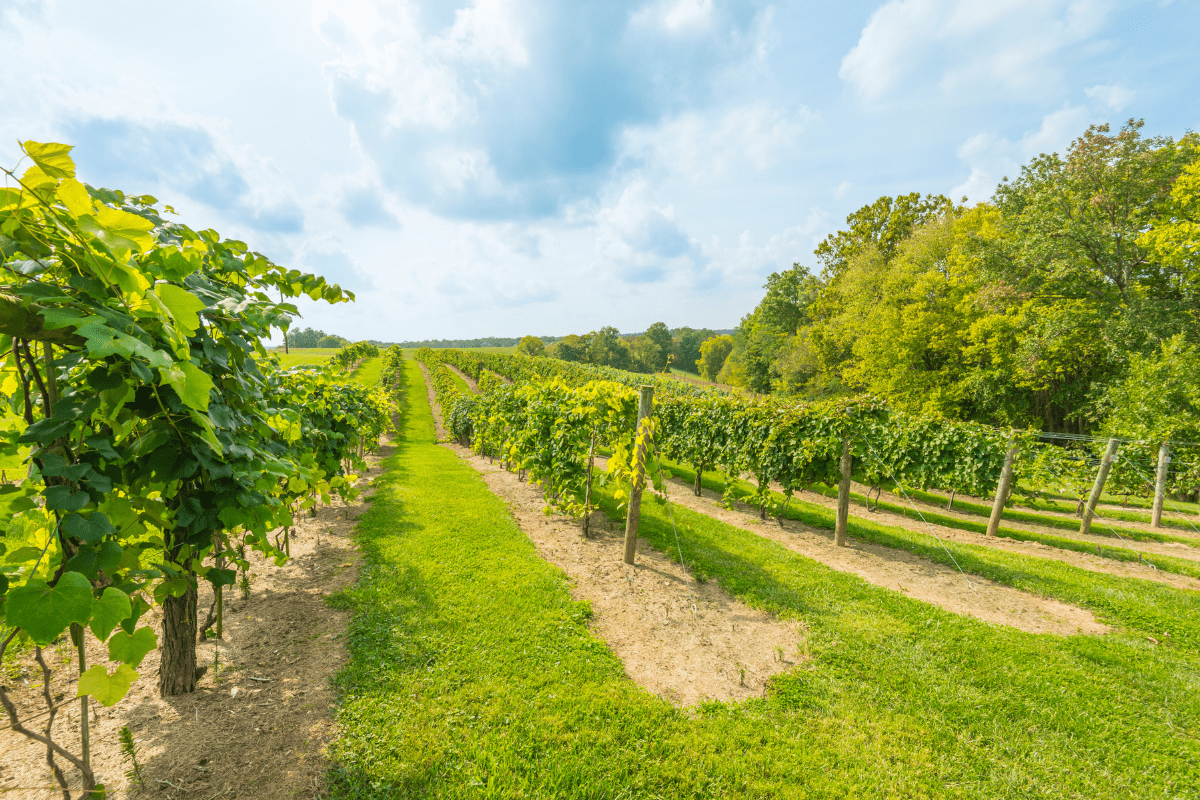Living in Kentucky means dealing with weather that can't make up its mind. One day it's humid enough to grow mushrooms in your shoes, and the next day you're scraping ice off your windshield while wearing shorts because it'll be 70 degrees by lunch.
Understanding Kentucky's Jekyll and Hyde climate
Let me paint you a picture of what we're dealing with here. Kentucky's humidity hovers around 68 to 70 percent year-round, which basically means your house is constantly trying to turn into a terrarium. Mornings are the worst, hitting 79 to 82 percent humidity… you know, that lovely time when you step outside and immediately feel like you need another shower.
Temperature-wise, we're talking swings from below zero to over 90 degrees Fahrenheit. Eastern Kentucky sees July highs around 82 degrees, while western Kentucky laughs at that with temperatures reaching 91. And don't even get me started on our 21 tornadoes per year or the fact that flooding is our most expensive natural disaster.
The regional differences across our state create unique challenges for homeowners:
- Eastern Kentucky's mountains create flash flood nightmares
- Western plains get hammered by tornadoes
- River regions battle chronic moisture
- Central Kentucky deals with limestone sinkholes
Honestly, sometimes I wonder if Mother Nature just spins a wheel every morning to decide what fresh hell to throw at us.
Critical maintenance tasks that'll save your bacon
Foundation protection from our notorious clay soil
Here's the thing about Kentucky clay soil that nobody tells you until it's too late: this stuff expands up to 10 percent when wet, creating 5,000 pounds per square foot of upward pressure. That's like parking a pickup truck on every square foot of your foundation.
During droughts, you actually need to water your foundation for about 15 minutes. Yes, I know that sounds crazy, but trust me on this one. Clay soil shrinks when dry, and those cracks become superhighways for water during the next storm. As the experts at The Basement Doctor put it, "Clay-rich soils usually cause more foundation damage by expanding than by contracting".
Watch for these warning signs like a hawk:
- Cracks wider than 1/4 inch
- Horizontal cracks near wall tops
- Doors and windows that stick
- That one cabinet door that won't stay closed
HVAC maintenance in humidity hell
Your HVAC system in Kentucky works harder than a one-legged cat in a sandbox. During pollen season, you need to change filters every 30 to 45 days instead of the standard 90 days. I learned this the hard way when my AC died in July and the repair guy pulled out a filter that looked like a wool sweater.
Keep your indoor humidity between 30 and 50 percent to prevent mold growth. Kentucky Climate Control, who's been dealing with our weather for over 30 years, warns that "the air in our homes is often up to five times worse than outside". That's… not great.
Annual maintenance runs about $75 to $85, which sounds like a lot until you realize emergency repairs average $1,500. Plus, there's nothing quite like your AC dying during a family reunion in August when everyone's staying at your house.
Flood prevention (because Noah would've loved Kentucky)
The July 2022 floods in eastern Kentucky killed 39 people and required over 600 helicopter rescues. This isn't something to mess around with. You need a sump pump with battery backup, period. Power goes out during storms, and a powerless sump pump is about as useful as a screen door on a submarine.
Test your sump pump monthly from March through October. Pour a bucket of water into the pit and make sure it kicks on. If it doesn't, well, better to find out on a sunny day than during a torrential downpour. Fun fact: 25 percent of flood insurance claims come from moderate-to-low risk areas, so don't assume you're safe just because you're not waterfront property.
Spring maintenance that actually matters
March kicks off our maintenance marathon with a professional HVAC inspection before cooling season. This costs about $75 to $85 and prevents those middle-of-the-night emergency calls when your AC decides to take a vacation.
Your March to-do list should include:
- Clean gutters of winter gunk
- Check foundation for freeze-thaw cracks
- Test that sump pump
- Start mentally preparing for pollen
April means switching to monthly HVAC filter changes and power washing your house exterior. Winter in Kentucky leaves everything looking like it's been through a mud wrestling match, and that mildew will only get worse once humidity kicks in. A professional roof inspection runs $200 to $400 but considering roof replacement averages $20,000 after storm damage, it's money well spent.
By May, you're setting up foundation watering systems and installing dehumidifiers in basements and crawl spaces. Set them at 45 percent humidity… any lower and you'll have static electricity issues, any higher and you're growing science experiments. Also check your window seals for condensation because nobody wants foggy windows all summer.
Summer survival mode
June through August in Kentucky is basically living in a sauna that occasionally gets hit by tornadoes. Monitor your indoor humidity levels daily and clean HVAC condensate drains with vinegar monthly. That algae buildup in humid conditions can clog drains faster than hair in a shower drain.
This is peak foundation monitoring season. Our clay soil gets particularly moody in summer, and as Sarah Etler from A-1 Concrete puts it, "clay soil goes through extreme expansion and contraction". Keep soil moisture consistent around your foundation. Think of it like keeping a temperamental houseplant alive, except this houseplant costs $200,000 and you live in it.
Fall prep for winter's tantrums
September brings your second annual HVAC inspection before heating season. This is also prime time for overseeding your lawn, with the sweet spot being September 1 to October 1. Seal any foundation cracks now, before water gets in there and freezes.
October is winterization month, and boy howdy, do we need it:
- Switch HVAC from cooling to heating
- Reverse ceiling fans clockwise
- Drain outdoor hoses
- Install storm windows
That last one is a $20 to $50 DIY project that saves hundreds in heating costs. Plus, there's something satisfying about battening down the hatches before winter arrives.
November means one last gutter cleaning after the leaves fall. I know, I know, nobody likes cleaning gutters. But ice dams are worse than gutter cleaning, trust me. Also inspect your roof one more time before winter storms start their nonsense.
Winter ice storm preparedness
Kentucky winters are special. The 2009 ice storm left 609,000 of us without power when we got 2 inches of ice accumulation. Two. Inches. Of. Ice. Let that sink in.
Change HVAC filters monthly during heavy heating use and watch for ice dams after snowfall. Proper attic ventilation with R-38 minimum insulation helps prevent these frozen nightmares. Ice dams are like nature's way of testing whether you did your fall maintenance homework.
Regional differences matter (a lot)
Eastern Kentucky mountain maintenance
Living in eastern Kentucky's mountains means dealing with elevation changes from 1,000 to 4,100 feet. Flash floods in narrow valleys happen fast… like, scary fast. You need enhanced drainage systems and erosion control on slopes. The Housing Development Alliance has completed over 1,000 home repairs in Breathitt, Knott, Leslie, and Perry counties, with demand surging after the 2022 floods.
Western Kentucky tornado alley
Western Kentucky has entered the chat with the highest tornado risk in the state. The December 2021 EF-4 tornado traveled 227 miles and killed 80 people. If you live here, reinforced construction isn't optional. The flat topography also means poor drainage, so your property needs serious water management systems.
River region moisture madness
Living near the Ohio or Mississippi rivers is like having a permanent humidity dome over your house. The 1937 flood submerged 70 percent of Louisville, and that's not even ancient history by Kentucky standards. Elevated foundations and continuous dehumidification are non-negotiable when humidity regularly exceeds 70 percent.
Money-saving strategies that actually work
Here's some good news: Kentucky has the lowest annual maintenance costs in the nation at $5,116 compared to the national average of $8,725. This means our preventive maintenance dollars go further.
Research shows preventive maintenance delivers a 545 percent return on investment. Every dollar spent saves $5 to $10 in emergency repairs. Those are better returns than my 401k, honestly.
Strategic timing saves serious cash:
- Roofing work costs 20-30% less in late winter
- HVAC installations drop 10-20% during off-seasons
- Buy tools during Labor Day sales at 40% off
- Stock up on HVAC filters in bulk
Insurance costs escalate fast with claims. Claim-free homeowners pay $2,060 annually, but one claim jumps that to $2,515, and two claims hit $2,985. Impact-resistant roofing and documented maintenance can qualify for discounts.
Getting professional help without getting hosed
The Kentucky Housing Corporation offers weatherization assistance through 20 Community Action Agencies statewide. Qualified families get free energy audits, insulation, and furnace repairs, saving up to $500 annually on utilities.
For seniors 62 and older in rural areas, USDA Section 504 grants provide up to $40,675 for disaster repairs. That's not pocket change.
Utility rebates add up fast. LG&E and KU serve 93 counties with ENERGY STAR equipment rebates and no-cost upgrades for qualified customers. Duke Energy Kentucky's Smart $aver program offers up to $800 for insulation and $400 for windows.
Finding legitimate contractors requires homework since Kentucky has interesting licensing laws. Check the Kentucky Department of Housing database for licensed electrical, HVAC, and plumbing contractors. Fun fact: there's no state licensing for roofing contractors, so look for Kentucky Roofing Contractors Association certification instead.
Expert wisdom from the trenches
Local contractors have seen it all. Brody Briscoe from A Godsend Roofing explains that "it's wind-driven with the hail, blowing into the sides of homes". Check garage doors and guttering first after storms… they're your canaries in the coal mine.
Madison County's 2023 hailstorm caused $40,000 to $60,000 damage per home. Per. Home. In Ghent, Kentucky, resident Nat Adams described storm damage where the "interior looked like it had been put in a blender". That's not exactly a ringing endorsement for skipping maintenance.
System-specific tips from the pros:
- Flush HVAC condensate lines with vinegar monthly
- Choose architectural shingles rated for 110+ mph winds
- Spring-flush French drains to remove clay particles
- Insulate exposed pipes with R-3 minimum
Preventing the big three disasters
Mold prevention
Maintaining 30 to 50 percent indoor humidity isn't optional in Kentucky… it's survival. Whole-house dehumidification systems work better than portable units. Set basement dehumidifiers at 45 percent with continuous drains. Make sure exhaust fans vent outside, not into your attic. That's just moving the problem upstairs.
Foundation protection strategies
Create a 5 percent grade slope within 10 feet of your foundation. Extend downspouts 6 feet from the house with splash blocks. Consider root barriers for trees near foundations. Trees are lovely until their roots crack your basement wall.
Flood damage prevention
Elevate all mechanicals at least 2 feet above base flood elevation. Install interior French drains with pressure relief systems. Apply waterproof membranes to basement walls. And remember, standard homeowners insurance excludes floods, so get separate flood insurance. The 30-day waiting period means you can't wait until the forecast looks scary.
Wrapping up this weather-beaten wisdom
Living in Kentucky means accepting that your house is constantly under assault from humidity, temperature swings, floods, tornadoes, and ice storms. But here's the thing… we're tough, our houses can be tough too, and proper maintenance makes all the difference.
The good news? Our $5,116 annual maintenance costs are the nation's lowest, making preventive care incredibly cost-effective. By staying ahead of Kentucky's weather tantrums with seasonal maintenance, regional adaptations, and strategic timing, you'll save thousands while keeping your home standing strong. Because in Kentucky, it's not about avoiding weather challenges… it's about outsmarting them.





